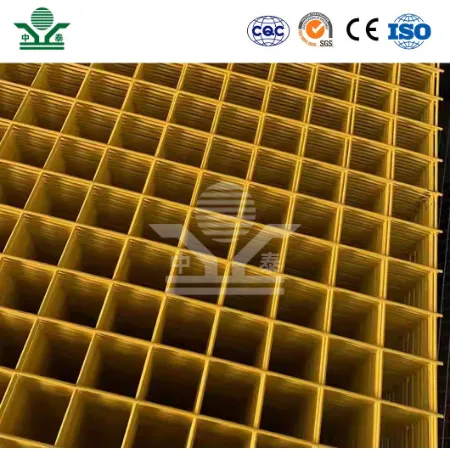Stainless Grating A Comprehensive Overview
Stainless grating is a versatile and essential component in various industrial, commercial, and architectural applications. Fabricated from stainless steel, this material offers superior strength, durability, and resistance to corrosion, making it a popular choice in environments where exposure to moisture and harsh chemicals is a concern. This article explores the properties, uses, and advantages of stainless grating, emphasizing why it has become a staple in modern design and construction.
Properties of Stainless Grating
Stainless grating is primarily composed of stainless steel alloys, which include chromium, nickel, and other elements that enhance its properties. The most common grades used for stainless grating are 304 and 316. Grade 304 has excellent corrosion resistance and a good balance of toughness and strength, while Grade 316 is particularly known for its superior resistance to pitting and crevice corrosion in chloride environments, making it ideal for marine applications.
The manufacturing process involves the creation of a grid pattern where the bars are arranged in a series of parallel lines, creating openings that allow for drainage and airflow. This design not only enhances functionality but also reduces the overall weight of the structure compared to solid flooring options. The open design of stainless grating provides excellent slip resistance, which is crucial in areas where liquid spills are common, like kitchens, factories, and outdoor spaces.
Applications of Stainless Grating
Stainless grating is used across various sectors, including
1. Industrial Settings In factories and warehouses, stainless grating is often installed as flooring for walkways, platforms, and stair treads. Its ability to support heavy loads while allowing debris and liquids to pass through makes it ideal for high-traffic areas.
2. Food Processing The food industry requires materials that can withstand rigorous cleaning protocols and resist bacteria. Stainless grating’s hygienic properties and ease of maintenance make it a preferred choice for flooring in food processing plants.
3. Marine and Coastal Applications Structures located near saltwater environments benefit from the corrosion-resistant properties of stainless grating, which prevents rust and degradation when exposed to the elements.
4. Architectural Applications Stainless grating is not only functional but also aesthetically pleasing. Its modern look makes it suitable for architectural applications, including staircases, ramps, and balustrades, blending safety with contemporary design.
stainless grating

5. Wastewater Treatment In wastewater treatment facilities, stainless grating is used in screens, walkways, and platforms that require regular contact with water and chemicals. Its durability ensures longevity and reliability in this demanding environment.
Advantages of Stainless Grating
The use of stainless grating in construction and manufacturing comes with several advantages
- Corrosion Resistance Stainless steel’s inherent corrosion resistance means that stainless grating maintains its integrity and appearance even in challenging environments, requiring less frequent replacements and reducing long-term costs.
- Strength and Durability Stainless grating is designed to withstand significant weight and stress, making it an ideal choice for heavy-duty applications.
- Low Maintenance Unlike other materials that may require regular maintenance or treatment to prevent rust or decay, stainless grating requires minimal upkeep. A simple periodic cleaning helps to retain its aesthetic appeal and functional properties.
- Eco-Friendly Stainless steel is 100% recyclable, contributing to sustainable building practices. Using stainless grating can help organizations meet their sustainability goals.
- Versatility Available in various styles and finishes, stainless grating can be tailored to meet specific project requirements, enhancing both functionality and design.
Conclusion
Stainless grating represents an important intersection of functionality, durability, and design. Its applications span numerous industries, showcasing its versatility and efficiency in meeting the needs of modern construction. As industries continue to prioritize safety, sustainability, and aesthetic appeal, stainless grating will undoubtedly remain a crucial element in various projects, paving the way for innovative solutions in the built environment. Whether in industrial settings or architectural designs, stainless grating stands out as a reliable option that balances performance with style.
-
The Strength and Versatility of Aluminum Expanded Metal Mesh
NewsJun.10,2025
-
Safety Guards and Machine Enclosures Using Expanded Mesh
NewsJun.10,2025
-
Performance with Round Hole Perforated Mesh in Wall Panels
NewsJun.10,2025
-
How Steel Grating Trench Covers Distribute Weight Efficiently
NewsJun.10,2025
-
How Deck Mesh Railing Enhances Backyard Aesthetics
NewsJun.10,2025
-
Comparing Bar Thickness and Spacing in Steel Grating
NewsJun.10,2025
Subscribe now!
Stay up to date with the latest on Fry Steeland industry news.

